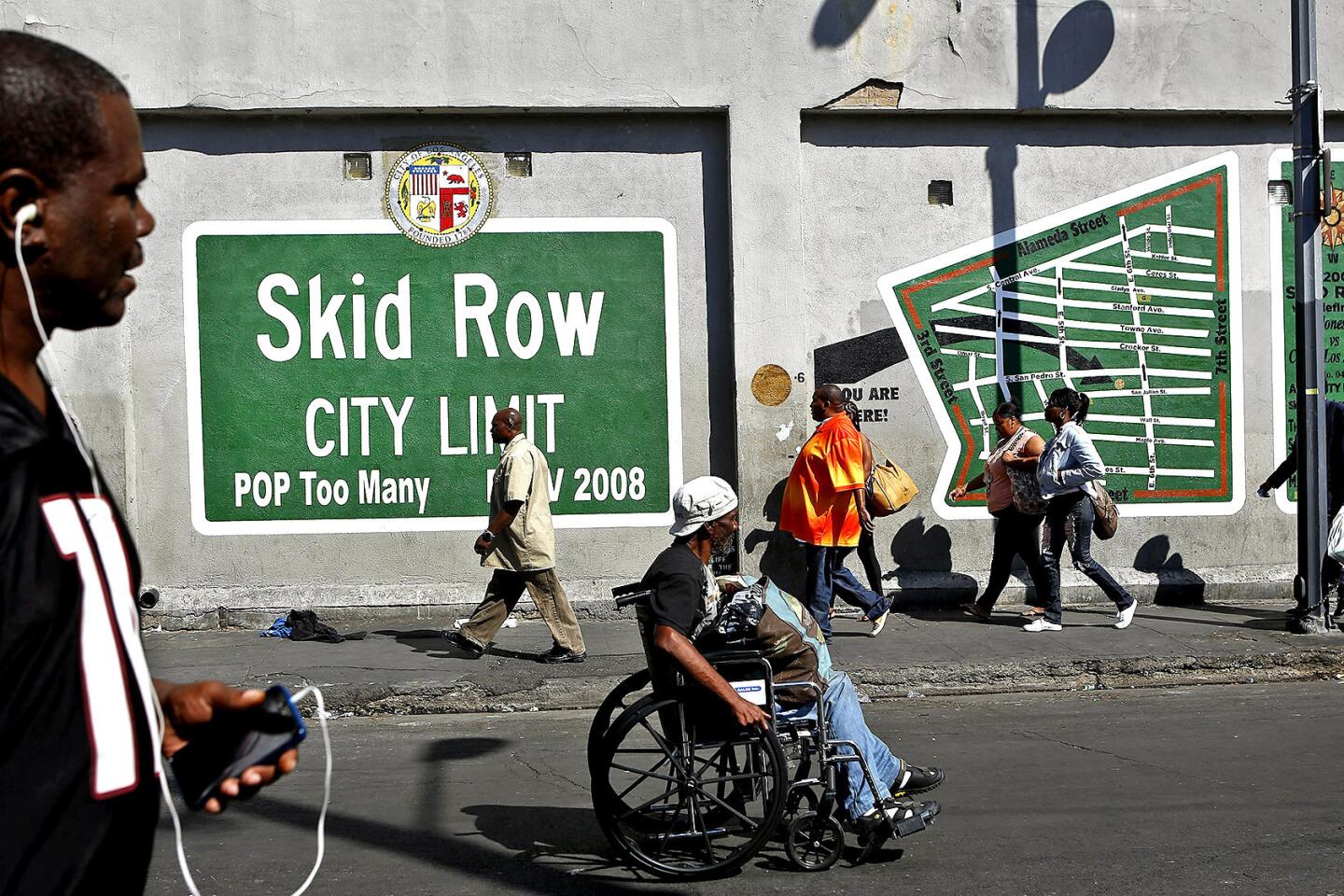
Skid Row is a name that often evokes images of hardship, resilience, and community. But what exactly is Skid Row, and why does it hold such a significant place in urban culture? Skid Row refers to a neighborhood in downtown Los Angeles known for its large homeless population and the struggles faced by its residents. This area has a rich history, filled with stories of both despair and hope. From its origins in the early 20th century to its current state, Skid Row has been a focal point for discussions on homelessness, social services, and urban development. Let's dive into 37 intriguing facts that will give you a deeper understanding of this unique and complex community.
Key Takeaways:
- Skid Row, a historic neighborhood in downtown Los Angeles, is home to a diverse population facing significant challenges, but efforts from various organizations and government initiatives aim to provide support and improve living conditions.
- Despite facing harsh living conditions and economic challenges, Skid Row residents demonstrate resilience and community spirit, with ongoing efforts to address homelessness through advocacy, government initiatives, and public awareness.
The Origins of Skid Row
Skid Row, a neighborhood in downtown Los Angeles, has a rich history. Known for its high population of homeless individuals, it has become a symbol of urban poverty and social issues.
- Skid Row's name originated from the term "skid road," used in the Pacific Northwest to describe the paths loggers used to transport timber.
- The area became known as Skid Row in the early 20th century when it was a hub for transient workers and those seeking employment in nearby industries.
- By the 1930s, Skid Row had developed a reputation as a place for cheap lodging and services catering to the down-and-out.
Population and Demographics
Skid Row is home to a diverse group of people, many of whom face significant challenges.
- Approximately 4,000 to 8,000 people live in Skid Row, making it one of the largest stable populations of homeless individuals in the United States.
- The majority of Skid Row residents are men, but there is a growing number of women and families.
- Many residents struggle with mental health issues, substance abuse, or both, which complicates efforts to provide assistance.
Living Conditions
Life on Skid Row is harsh, with many residents lacking basic necessities.
- Tents and makeshift shelters line the streets, providing minimal protection from the elements.
- Access to clean water and sanitation facilities is limited, leading to public health concerns.
- The area has a high crime rate, with residents often falling victim to theft, assault, and other violent crimes.
Efforts to Address Homelessness
Various organizations and government agencies work to improve conditions on Skid Row.
- The Los Angeles Homeless Services Authority (LAHSA) coordinates efforts to provide housing, healthcare, and other services.
- Nonprofits like the Midnight Mission offer meals, shelter, and rehabilitation programs to those in need.
- In recent years, there have been increased efforts to build affordable housing and provide permanent supportive housing for Skid Row residents.
Health and Social Services
Healthcare and social services are critical for Skid Row residents.
- The Skid Row Housing Trust provides permanent supportive housing with on-site services to help residents maintain stability.
- The Los Angeles Christian Health Centers offer medical, dental, and mental health services to the homeless population.
- Harm reduction programs, such as needle exchanges, aim to reduce the spread of infectious diseases among drug users.
Legal and Policy Issues
Skid Row is often at the center of legal and policy debates.
- The "Safer Cities Initiative," launched in 2006, aimed to reduce crime in Skid Row through increased police presence and enforcement of minor offenses.
- Critics argue that such initiatives criminalize homelessness and do little to address the root causes of poverty.
- Recent court rulings have affirmed the rights of homeless individuals to sleep on public property if no alternative shelter is available.
Cultural Impact
Skid Row has influenced various aspects of culture and media.
- The area has been featured in numerous films, documentaries, and television shows, often highlighting the struggles of its residents.
- Artists and musicians have drawn inspiration from Skid Row, using their work to raise awareness about homelessness and social justice.
- The annual "Skid Row Carnival of Love" brings together volunteers and residents for a day of celebration and community building.
Economic Factors
Economic conditions play a significant role in the challenges faced by Skid Row residents.
- The high cost of living in Los Angeles contributes to the city's homelessness crisis, with many unable to afford housing.
- Job opportunities for low-income individuals are limited, making it difficult for Skid Row residents to find stable employment.
- The lack of affordable housing options exacerbates the problem, with many people forced to live on the streets.
Community and Advocacy
Despite the challenges, there is a strong sense of community and advocacy within Skid Row.
- Residents often form tight-knit communities, providing support and protection for one another.
- Advocacy groups, such as the Los Angeles Community Action Network (LACAN), work to empower residents and fight for their rights.
- Community events, like the Skid Row Arts Festival, showcase the talents and resilience of the neighborhood's residents.
Government Initiatives
Government initiatives aim to address the complex issues facing Skid Row.
- The "Housing First" approach prioritizes providing permanent housing to homeless individuals without preconditions.
- Measure H, passed in 2017, increased sales taxes to fund services for the homeless, including those in Skid Row.
- Project Roomkey, launched during the COVID-19 pandemic, provided temporary housing in hotels and motels for vulnerable individuals.
Challenges and Controversies
Efforts to improve conditions on Skid Row face numerous challenges and controversies.
- Gentrification in downtown Los Angeles has led to increased pressure on Skid Row residents, with some fearing displacement.
- There is ongoing debate about the best approaches to addressing homelessness, with differing opinions on the balance between enforcement and support.
- Funding for homeless services is often limited, making it difficult to meet the needs of all Skid Row residents.
Future Prospects
The future of Skid Row remains uncertain, with both challenges and opportunities ahead.
- Continued investment in affordable housing and supportive services is essential to addressing homelessness in the area.
- Collaboration between government agencies, nonprofits, and community organizations will be crucial in finding sustainable solutions.
- Public awareness and advocacy can help drive policy changes and increase support for those living in Skid Row.
- The resilience and determination of Skid Row residents offer hope for a brighter future, despite the many obstacles they face.
The Heart of Skid Row
Skid Row isn't just a place; it's a story of resilience and struggle. This neighborhood, often misunderstood, holds a mirror to society's challenges and triumphs. From its history of economic hardship to the vibrant community efforts today, Skid Row shows both the harsh realities and the incredible spirit of its residents.
Understanding Skid Row means recognizing the importance of compassion and action. The facts we've shared highlight the need for continued support and awareness. Whether it's through volunteering, advocacy, or simply educating others, every effort counts.
Skid Row's journey is far from over. With ongoing efforts and a collective will, there's hope for a brighter future. Let's remember the lessons from Skid Row and strive to make a difference in our communities.
Frequently Asked Questions
Was this page helpful?
Our commitment to delivering trustworthy and engaging content is at the heart of what we do. Each fact on our site is contributed by real users like you, bringing a wealth of diverse insights and information. To ensure the highest standards of accuracy and reliability, our dedicated editors meticulously review each submission. This process guarantees that the facts we share are not only fascinating but also credible. Trust in our commitment to quality and authenticity as you explore and learn with us.


